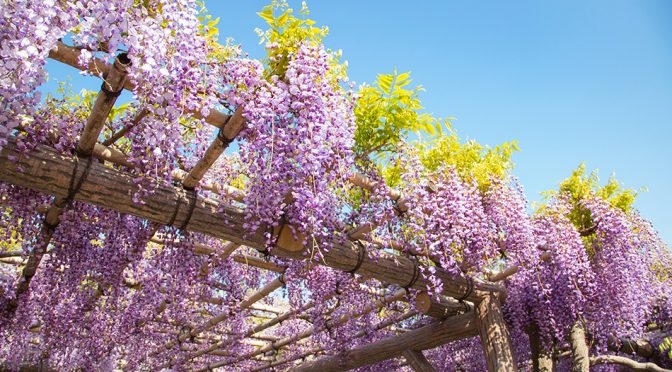Category: Asia
-

spring flowers of tokyo
—
by
Spring in Japan brings more than just cherry blossoms. Tokyo’s green spaces erupt into a rainbow of colorful spring flowers. Here are the best spots.Japan has a huge variety of flora and fauna. Cherry blossoms are world-famous, but that isn’t the only reason to go flower watching in spring. Colorful azaleas, wisteria vines and roses,…
-

Japanese food, what where and how
—
by
Japanese ingredients blessed with distinct seasons and an abundant harvest from the sea and mountains are very rich in variety. The key appeal of Tokyo’s culinary scenes is the availability of fresh and flavorful ingredients from all over Japan. In Tokyo, a city with a long history and rich culture, you can experience everything from…
-
Unleash your inner adventurer in Norway’s wilderness on the new Western Fjords Hiking Tour
—
by
Vancouver, Febrauary 4th, 2019– Nordic Travel Specialist, 50 Degrees North, has introduced a new, exclusive 9-day tour, ‘Western Fjords Hike’. Aimed at all active adventurers with a reasonable fitness level and a love for hiking, this tour takes them into the heart of the unique, secluded and exceptionally beautiful Western fjords in Norway, away from…
-
Traveling with Children to China. Part #3 Xi’an and Qingdao
—
by
We loved Mian Shan area so much that we decided to postpone our planned trip to Xi’an in few hours, and take a speed train afternoon. So..whole morning we explored new areas of Mian Shan with Beautiful Taoist temples and valleys. Our favorites are: Chess Cave in Qixuan Valley Zhujia Hollow Area Lingbao God Temple…
-
Traveling with children to China, Part#2 Pingyao and Mian Shan
—
by
Beijing Railway Station From Beijing Railway Station we took overnight train to Pingyao. Even we booked our tickets well in advance, the softsleeper was sold out, and we had left with hard sleeper choice only. Before the trip I worried about safety, and personal belongings in the train, but after great experience with hard sleeper,…
-
CHINA, traveling with children Part #1 Beijing
—
by
When I visited Qingdao, China on my first trip, right from the first day, I came up with ideahat I have to come again with my whole family. Children must see the different world, different culture and traditions,..show to them that not the whole world speak English…That there are places where you have to struggle…
-
Point Yamu by COMO – A New Resort for Phuket Designed by Paola Navone – Opening November 2013
—
by
Resort will be first in Thailand for COMO Hotels and Resorts outside Bangkok Point Yamu by COMO, the new resort from COMO Hotels and Resorts designed by Paola Navone, will open in November this year. Point Yamu is located on Cape Yamu, a peaceful peninsula on the east side of Phuket. The resort overlooks the…
-
Tax Deductible Travel! Volunteer vacationing spots in the world!
—
by
Save Money with Tax Deductible Travel Volunteer vacationers can get money back on project contribution costs Online release with images: http://new.pitchengine.com/pitches/a794efb2-a0e4-4795-bbd4-5358e1ff4303 VANCOUVER, BRITISH COLUMBIA, March 6 – Vacationers who thought certain destinations would be out of financial reach might want to investigate the tax deductions available with volunteer vacations. Travellers who participate in specific volunteer…
-
Hands-On volunteer travel project deals around the world!
—
by
Hands-On Time Travel Dig into history with volunteer projects all over the world VANCOUVER, BRITISH COLUMBIA, February 26, 2012 – Help to unravel some of the world’s mysteries by assisting on archaeological sites where Roman soldiers, Mongolian warriors, and Rapanui sculptors once resided. Volunteers step back in time in spectacular locations whilst being guided by…
-
Thirty-One Days of Wellness.
—
by
Thirty-One Days of Wellness Join our leading wellness experts at Metropolitan by COMO, Bangkok during ‘Wellness Month’ in March February 8, 2013 (Bangkok, TH) – Experts in ‘raw food,’ massage therapy and yoga will be on hand at COMO Shambhala Urban Escape throughout March as part of a dedicated ‘Wellness Month’ at Metropolitan by COMO,…